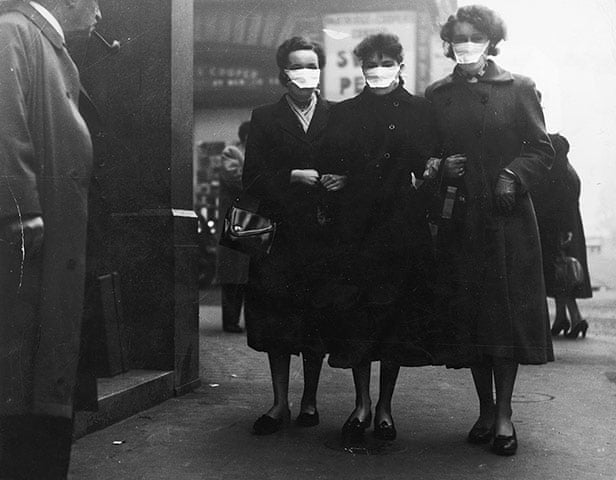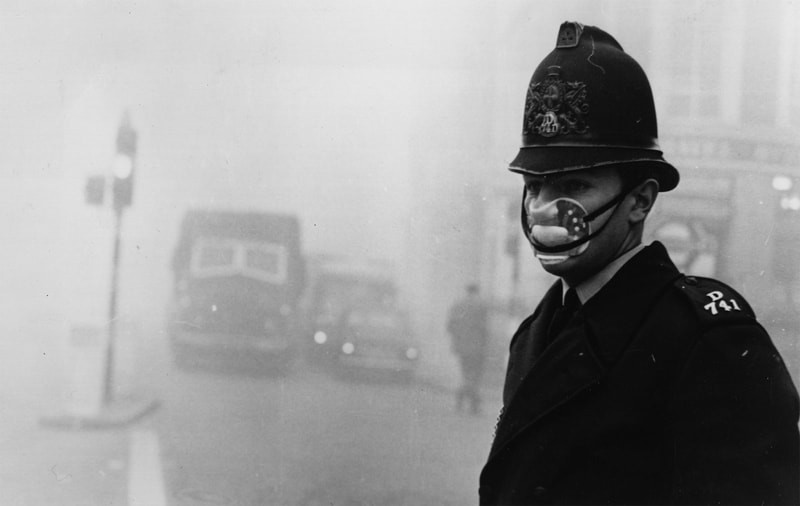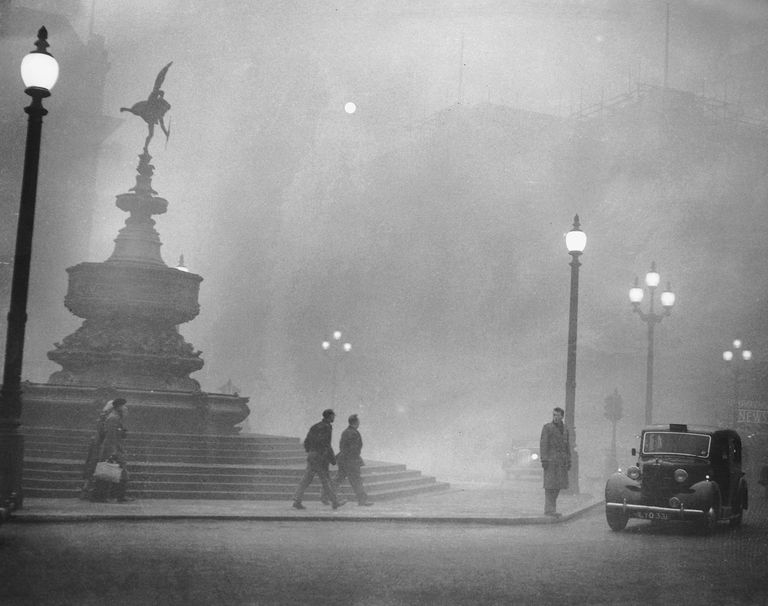|
London is naturally a dreary, rainy city. But what happens when their usual fog turns deadly, killing thousands of citizens and animals? This article explores the 1952 phenomenon known as the Great Smog. The beginning The start of the smog was not unusual for the city, and people went about their day mostly unbothered. However, the noxious skies soon became difficult to ignore. The fog had turned a sickly shade of yellow-brown from mixing with the soot produced by factories and automobiles. To make matters worse, a high-pressure weather system had stalled across southern England, leading to a temperature inversion (where a layer of warm air far above the surface traps cold air at ground level). This inversion prevented London's sulfur-filled coal smoke from rising, and the 30-mile wide toxic cloud loomed over the city. As the smog settled Many residents were unable to see their own feet as the dense smog settled across London. Train systems shut down, except for the London Underground. Drivers, unable to see the road ahead of them, abandoned their cars on the streets. Black ooze coated the side walks, and as pedestrians returned home they resembled coal miners. Crime increased, as criminals could easily vanish into the darkness without a trace. As the days passed, the smog seeped into buildings as well -- nowhere was safe. Health effects This catastrophic event had many detrimental health effects to Londoners. The toxic smog was lethal, especially to children, the elderly, and heavy smokers who already had weakened lungs. Deaths from bronchitis, pneumonia, and other respiratory conditions increased drastically. Though the smog passed within five days, the death rate did not go down until the summer of 1953. Experts estimate that the smog claimed at least 12,000 lives. The effects weren't just limited to humans. Unable to see, birds crashed into buildings and prized show cattle choked to death. Response The British government was initially hesitant to respond to the crisis, as they believed heavy fog was a common occurence. After an investigation, though, Parliament passed the Clean Air Act of 1956. This restricted the burning of coal in urban areas and allowed local councils to establish smoke-free zones. Homeowners received incentives to switch to an alternative heating system from coal. This act was considered a major step forward for environmentalism, and has helped improve public health in England's cities. Image credits: Terry Fincher/Getty Images (left, middle) & Hulton Archive (right)
4 Comments
Alex Nacol
4/21/2021 12:48:34 pm
These descriptions are really well-written and I like how you included images. Overall, the organization is really great and this blog looks really interesting and important to consider.
Reply
Erin
4/21/2021 12:50:43 pm
Wow, I never knew about this. The article was really well-written and intriguing; once I started reading it, I couldn't stop. Amazing job!
Reply
This is really cool! One of those things I've vaguely heard of but never taken the time to learn more.The images are amazing. I'm bad with dates, though, and got a little confused. Is there a way you could include a date or date range alongside each section header? I think it would be a useful visual touch. Looking forward to more!
Reply
Alyssa
4/21/2021 12:51:06 pm
This seems like a cool series that could easily be continued into many other topics. I like how you separated the post into sections detailing the timeline and effects.
Reply
Leave a Reply. |
What is this?This column looks back at past environmental disasters to see what went wrong and how it can affect our future. Archives |



